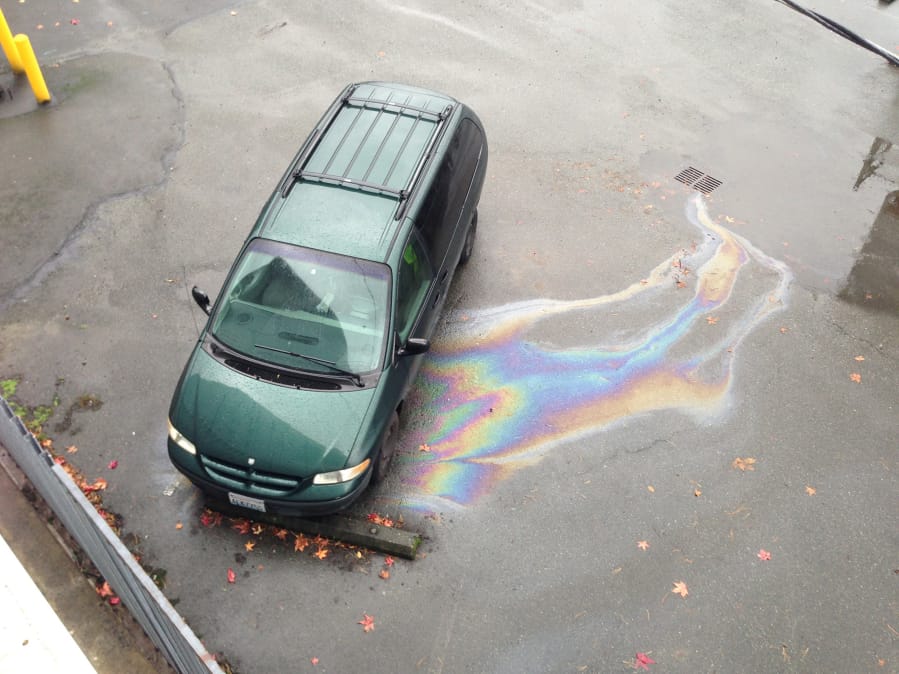It’s easy for drivers to ignore the leaks and drips coming off their autos — considering how expensive auto repairs can be, occasionally topping off the oil is much cheaper than a trip to the mechanic — but all those tiny spills have an outsized cumulative environmental impact. Now the state and several local groups are uniting behind a campaign called Don’t Drip and Drive to make Clark County drivers more vehicle-maintenance conscious and make their repairs a little more affordable.
“Motor oil is one of the most toxic components of stormwater runoff that we have studied to date. Even brief exposures cause heart problems in developing fish,” Washington State University aquatic toxicologist Jen McIntyre said in a news release.
Don’t Drip and Drive isn’t new to Clark County. Since last year, at least, a handful of local auto shops have participated in it, offering free visual inspections and honoring a coupon good for up to 10 percent or as much as $50 off a repair. That element of the program will continue.
But Stormwater Partners of Southwest Washington, a collaboration of local jurisdictions, nonprofit and tribal organizations, is collaborating to give it a bigger presence in the county by actively promoting the program in person and online, and also hosting free leak-check events.
“We’re hoping people understand and learn leaks are a big problem for our local waters. Those storm drains are flowing straight into the Columbia River and Burnt Bridge Creek,” said Sunrise O’Mahoney, executive director of the Southwest Washington Watershed Alliance. The Watershed Alliance plans to hold 15 leak-check events over the next two years, during which Clark County residents will be able to find out if they have a leak, and learn about repair options from a third-party mechanic.
“Our target is to have 15 events, reaching 750 vehicles,” she said.
The program got its start in King County. Clark County and the city of Spokane are the first two jurisdictions outside of King to embrace it. Funding for the program in Clark County comes via grant money from the Clark County Clean Water Restoration Fund, which is administered by the Lower Columbia Fish Recovery Board.
There are nearly 400,000 registered vehicles in Clark County, driving more than 3 million miles a year on its roads. Based off a Washington State Department of Ecology study on vehicle leaks around Puget Sound, the coalition estimates Clark County vehicles leak more than 600,000 quarts of oil into local watersheds.
O’Mahoney also said they’re looking for other businesses interested in hosting a leak-check event, either for their employees or the public at large.
Program coordinators plan to create an itinerary of vehicle makes, models and milage leaks. They will also track where the vehicle was leaking and when it was fixed. However, they won’t track any personal information attached to the car.
“We want to know our people fixing leaks and what leaks are connected to which cars,” O’Mahoney said. “Then we’ll report that information to the Don’t Drip and Drive program (in Olympia). They’re compiling that data for the whole state.”




